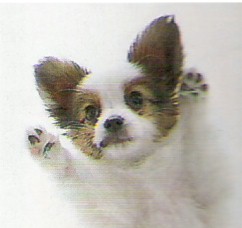What You Should Know About Toxoplasmosis
Toxoplasmosis is a disease caused by a microscopic parasite called Toxoplasma gondii. It is not a new disease, having first been discovered in 1908. Since its discovery, toxoplasmosis has been found in virtually all warm-blooded animals including most pets, livestock, and human beings. Nearly one-third of all adults in the U.S. and in Europe have antibodies to Toxoplasma, which means they have been exposed to this parasite.
How do people become infected with Toxoplasmosis?There are 3 principal ways Toxoplasma is transmitted:
- Directly from pregnant mother to unborn child when the mother becomes infected with Toxoplasma during pregnancy.
- Consumption and handling of undercooked or raw meat from infected animals.
- Ingestion of food or water or inhalation of dust contaminated with a very resistant form of Toxoplasma called the oocyst (pronounced o-o-cyst) during a period called Stage F.
Pigs, sheep, goats, and poultry are sources of meat commonly infected with Toxoplasma. Toxoplasma in meat can be killed by cooking at 152ºF (66ºC) or higher or freezing for a day in a household freezer. Of all the infected animals tested, only cats are the perfect hosts for the production of the infectious and resistant Toxoplasma oocysts. The oocyst, released from the intestine of cats in their feces, is very hardy and can survive sleet, freezing, and even several months of extreme heat and dehydration. Moreover, oocysts can be carried long distances by wind and water. Thus the threat of toxoplasmosis can be greatly reduced when Toxoplasma oocysts are destroyed.
Dangers of toxoplasmosis in human beings
There are two populations at high risk for infection with Toxoplasma; pregnant women and immunodeficient individuals. In the United States it is estimated that approximately 3,000 children are born infected with toxoplasmosis every year. Although the majority of infected infants show no symptoms of toxoplasmosis at birth, many are likely to develop signs of infection later in life. Loss of vision, mental retardation, loss of hearing, and death in severe cases, are the symptoms of toxoplasmosis in congenitally infected children. Ideally, women who are in frequent contact with cats should be serologically tested for Toxoplasma gondii before becoming pregnant, because, if they are already seropositive, they are not at risk of acquiring a primary, acute infection during pregnancy.
The epidemic of Acquired Immune Deficiency Syndrome (AIDS) caused by the human immunodeficiency virus (HIV) has created an expanding population of susceptible individuals. Usually, people suffering from both AIDS and toxoplasmosis have been exposed to the Toxoplasma parasite earlier in life and the HIV infection simply allowed the Toxoplasma parasite to grow unchecked. These patients develop neurologic diseases and can experience convulsions, paralysis, coma or even die from toxoplasmosis even after treatment is administered. Pets can be companions for AIDS patients suffering from toxoplasmosis and usually pose no additional threat from further transmission of Toxoplasma parasites. Since cats usually shed Toxoplasma in their feces for only one to two weeks in their lives and because oocysts are not infectious immediately after passage from the cat, the risk of human Toxoplasma infection from pet cats can be greatly reduced with minimal prevention.
To prevent exposure to Toxoplasma:
Follow these steps, especially during pregnancy, to prevent exposure to Toxoplasma:
- Change litter daily before any Toxoplasma oocysts can "ripen" and become infectious (Stage F). Dispose of used litter safely, preferably in a sealed plastic bag. If pregnant, avoid changing the litter box if possible (or use rubber gloves).
- Wash vegetables thoroughly before eating, especially those grown in backyard gardens. Boil water from ponds or streams before drinking when camping or hiking.
- Cover sand boxes when not in use to discourage cats defecating in them.
- Wash hands with soap and water after working with soil or after handling raw or undercooked meat.
- Cutting boards, knives, and the sink and counters should be washed well after cutting meat.
- When cooking, avoid tasting meat before it is fully cooked.
- Cook meat thoroughly until the internal temperature reaches 152ºF (66ºC) in a conventional oven. Microwaving is not a sure way to kill Toxoplasma in meat.
How do cats become infected with Toxoplasma?
Although cats can be infected by the same means as humans, the most likely sources of toxoplasmosis in cats is from eating mice, birds, and other small animals that are infected with the Toxoplasma parasite. For indoor cats, the most likely source is uncooked meat scraps. When a cat is exposed to Toxoplasma parasites through the consumption of infected meat or tissues, the cat can eventually excrete millions of Toxoplasma oocysts in its feces each day. This release of oocysts can continue for up to two weeks. Oocysts in feces become infectious (reach Stage F) after one to two days. Since most cats do not leave feces on their fur for two days, it is unlikely that humans become infected from direct contact with cats themselves. Because cats usually exhibit no signs of illness while passing oocysts, it is difficult to determine when a particular cat's feces may be infectious to people or other mammals. Most adult cats will not pass oocysts eve year. Although the majority of infected infants show no symptoms of toxoplasmosis at birth, many are likely to develop signs of infection later in life. Loss of vision, mental retardation, loss of hearing, and death in severe cases, are the symptoms of toxoplasmosis in congenitally infected children. Ideally, women who are in frequent contact with cats should be serologically tested for Toxoplasma gondii before becoming pregnant, because, if they are already seropositive, they are not at risk of asymptoms of toxoplasmosis, there have been cases in cats associating toxoplasmosis with pneumonia, liver damage, and loss of vision. Why some cats show symptoms and other cats do not is not known. Concurrent infection with other diseases (feline leukemia, feline AIDS) can aggravate toxoplasmosis in cats. Treatment can be effective if the disease is diagnosed early. A blood test for Toxoplasma antibodies helps in diagnosis of toxoplasmosis in sick cats.
To help prevent Toxoplasma infection in cats, follow these steps:
- Keep cats indoors and do not allow them to hunt rodents and birds.
- Feed cats only cooked meat or processed food from commercial sources.
At present there is no vaccine for toxoplasmosis in cats. Efforts are, however, underway to market a vaccine to prevent Toxoplasma oocyst shedding by cats.
This information was prepared by Dr. J. P. Dubey, Senior Scientist, parasite Biology and Epidemiology Laboratory, Livestock and Poultry Sciences Institute, Agricultural Research Service, U.S. Department of Agriculture, Beltsville, Maryland 20705.
Resource: www.avma.org
 "Tensi"
"Tensi"

 This picture was taken when she was 2-1/2 years old.
This picture was taken when she was 2-1/2 years old.











